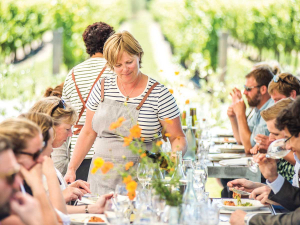Dry before sweet is a no-brainer. A dry wine is seriously disadvantaged when it follows a sweet wine which can make it taste tart or even bitter. For that reason, I prefer the United States convention of serving a cheese course and accompanying wine before the desert course, rather than the British habit of serving them round the other way.
Wine competitions historically served sparkling wine classes first, then light dry whites such as Sauvignon Blanc next, followed by full-bodied whites such as Chardonnay, then lighter reds and bigger reds, finishing with dessert wines and fortified wines. Mercifully, most now follow a while class with a red class then a white class to give the judges a break from acidity and astringency.
When given the option of serving order at a vertical tasting of the same red wine over several vintages, I normally swim against the stream, opting for old before young on the basis that older wines tend to be more delicate and subtle flavours are sometimes lost when preceded by a big, boisterous and youthful version of the same wine.
Ordinary before fine makes perfect sense, at least from a hedonistic point of view. It is always best to finish on a high note.












